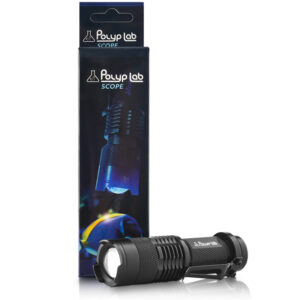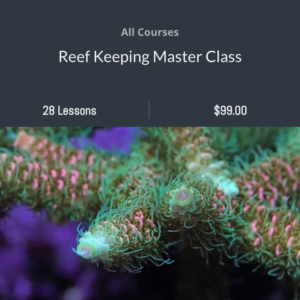During my twenty years keeping reef tanks I have always used live rock to start my tanks. However, more reef keepers today are going with dry rock so I decided to give it a shot and use it for my latest 187 gallon reef tank.
Pros and cons exist for both options. Fully cured live rock comes with a lot of bio diversity and is a great way to cycle a tank quickly. Some just prefer that instant, natural look and are intrigued by what can appear or emerge over time. I always got jazzed when I started a new tank since I really enjoyed studying the nooks and crannies of the rock for new “life”.
Live rock can also come with coralline algae, which is beneficial since it adds color to the reef scape and prevents problematic algae from taking hold. Coralline also acts as glue to hold pieces of rock together, providing stability to the reef.
Dry Rock Has an Advantage vs Live Rock When it Comes to Hitch Hikers
The big downside for me regarding live rock is the potential for hitch hikers. You never know what lies inside so there is always the possibility of importing some unwanted critters such as a mantis shrimp or a crab that might munch on acros. I never had to deal with a mantis shrimp but I did have to hunt down and catch a number of naughty crabs, not an easy task to say the least.
Anemones such as Aptasia or Majano can also be attached to live rock and cause major problems since they are capable of spreading quickly and overtaking an entire reef. Problematic algae such as bryopsis is another potential hitch hiker that can bring reef keepers to their knees. In fact, I had to break a tank down due to my inability to eradicate a form of macro algae that spread quickly and rooted itself in all of my live rock and SPS. It simply drove me crazy and I ended up taking a break from the hobby.
Keep in mind that all of the hitch hikers mentioned above can make there way into a tank started with just dry rock if corals added to the tank are attached to a piece of live rock. However, the likelihood of having hitchhikers is greatly reduced if you go the dry rock route.
Dry Rock Cycle is Longer
As for dry rock, it can take longer to cycle if you don’t seed the biological bed with nitrifying bacteria so more patience is sometimes necessary. You also lose the benefits associated with having coralline algae, although you can add it via coralline scrapings from another tank or a commercial starter kit. An additional downside with dry rock is the possibility it might leach phosphates into the water, which could spur on algae growth. One way to get around this is to remove the phosphates by giving the rock a bath in an acid solution. You really have to be careful if you go that route since you are initiating a volatile chemical reaction. I don’t think this step is necessary so my recommendation is to soak the rock a bit in RODI water to remove any dust that might clog the filter socks.
My overriding fear of hitchhikers is what swayed me to go the dry rock route and give Marco Rocks a try. I also like the fact that you can take your time sculpting a reef structure with mortar and fiberglass rods. Dry rock is also less expensive.

My Dry Rock Experience – Not Good 🙁
So how did my dry rock only tank fare? Well, over a year and a half I had problems I never encountered before with my live rock only tanks. And I just couldn’t grow SPS like I had in the past. First it was a bacteria bloom and then I had a bad case of diatoms. The biggest problem turned out to be dinoflagellates, an issue that caused me to break the tank down completely and throw out the dry rock and live sand.
Do I have direct proof the dry rock was the culprit? No, but I do have anecdotal evidence from other veteran reef keepers who had similar issues when using dry rock only to start a reef tank. Nonetheless, I will be using live rock to reboot my tank. For information on how to aquascape a new tank with either live or dry rock, please read Aquascaping – Less is More For Reef Tanks.
Additional Resources
If you would like some help with a new tank build, including help designing a custom aquarium, or help re-configuring your current setup then you can visit this page for more information. And if you are looking to add some equipment, I do sell GHL, Pax Bellum, Reef Octopus Calcium and Kalk Reactors and Royal Exclusiv products, including Dreamboxes, which is the equipment I use and recommend. I also sell Reef Brite metal halide and LED fixtures as well as Maxspect & IceCap Gyres.
As for additional insights and information, please explore my many other reef tank and SPS related articles as well as my YouTube channel. For an even deeper dive into reef tank care you can check out my Reef Keeping Master Class. This online course is an immersive and one of a kind educational tool designed to help reef aquarium hobbyists build and maintain a beautiful SPS reef tank. The course is a series of video presentations with some supplemental video from my YouTube channel. There are also quizzes to help students retain and understand the information presented in the course.
Need some frags…..I can help with that as well 🙂 Please visit my SPS Frag store to see what is available.









